About this Course
Join us for a rare and transformative opportunity to study with three esteemed instructors from the traditions of Indian and Tibetan yoga.
Richard Freeman and Mary Taylor teach yoga āsana and prāṇāyāma, while Dr. Ale Chaoul teaches Tibetan yoga or trul khor. United by a deep love of meditation and the Dharma, they have thoughtfully crafted this course with meditators in mind. You’ll get to learn from both traditions as you find out the powerful ways that yoga can support profound meditative states, helping you with common challenges like drowsiness and restlessness. In the end, you’ll get expert training in practices that will be a lifelong support on your journey to liberation.
Lessons
Lesson 1: Unifying Body, Breath, and Mind
Ale, Mary, and Richard join forces to highlight the deep connection between the yogic traditions of India and Tibet. In this lesson they explore perspectives on the interconnectivity of body, breath, and mind and the roles of posture, energy, and meditative practices in helping the practitioner cultivate openness, stability, and self-awareness. You’ll discover how integrating physical alignment, breath control, and mental focus can enhance meditation, deepen presence, and foster your sense of connection with the broader world.
Ale, Mary, and Richard join forces to highlight the deep connection between the yogic traditions of India and Tibet. In this lesson they explore perspectives on the interconnectivity of body, breath, and mind and the roles of posture, energy, and meditative practices in helping the practitioner cultivate openness, stability, and self-awareness. You’ll discover how integrating physical alignment, breath control, and mental focus can enhance meditation, deepen presence, and foster your sense of connection with the broader world.
Lesson 2: Channeling Prāṇa and Āpaṇa into Posture and Awareness
Richard and Mary explain the fundamental role of the body in yoga, introducing a breath-oriented practice to enhance your mind’s clarity during sitting practice. You’ll learn to work with prāṇa and āpaṇa—the energies of inhalation and exhalation—to balance and sharpen your meditation while preserving optimal physical alignment, emotional balance, and mental lucidity.
Richard and Mary explain the fundamental role of the body in yoga, introducing a breath-oriented practice to enhance your mind’s clarity during sitting practice. You’ll learn to work with prāṇa and āpaṇa—the energies of inhalation and exhalation—to balance and sharpen your meditation while preserving optimal physical alignment, emotional balance, and mental lucidity.
Lesson 3: The Five Tsa Lung Movements to Enhance Meditative Focus
Ale takes the reins to uncover the role of the external tsa lung trul khor practices (from the Mother Tantra) in supporting meditation, highlighting how these five key movements engage breath, movement, and awareness to clear obstacles, balance energy, and enhance meditative focus. You’ll learn how integrating these movements with proper posture, breath control, and awareness can cultivate inner openness, stability, and a deeper connection to your meditative practice.
Ale takes the reins to uncover the role of the external tsa lung trul khor practices (from the Mother Tantra) in supporting meditation, highlighting how these five key movements engage breath, movement, and awareness to clear obstacles, balance energy, and enhance meditative focus. You’ll learn how integrating these movements with proper posture, breath control, and awareness can cultivate inner openness, stability, and a deeper connection to your meditative practice.
Lesson 4: Utilizing Sound’s Energy to Connect Body and Mind
Ale, Mary, and Richard reassemble to explore how breath and sound serve as gateways to energy through deep connections to physical and meditative practices. You’ll gain greater familiarity with techniques such as prāṇāyāma, re-inhalation, and the use of vibratory sound, emphasizing how breath travels through energy channels, influences the nervous system, and facilitates a union of mind and body.
Ale, Mary, and Richard reassemble to explore how breath and sound serve as gateways to energy through deep connections to physical and meditative practices. You’ll gain greater familiarity with techniques such as prāṇāyāma, re-inhalation, and the use of vibratory sound, emphasizing how breath travels through energy channels, influences the nervous system, and facilitates a union of mind and body.
Lesson 5: Deepening Awareness with the Five Prāṇa Patterns
Drawing from the Indian yogic tradition, Richard and Mary discuss the five primary prāṇa patterns, their role in the aṣṭāṅga vinyasa system, and how breath, movement, and stillness create balance and deeper awareness. They also introduce energy-balancing techniques such as the jālandhara bandha, the khecarī mudrā, and the yoni mudrā as well as prāṇāyāma practices including viloma and bhastrikā. You’ll learn how to integrate breath control, visualization, and specific bodily engagements such as bandhas to generate energy flow, stability, and a profound sense of connection between mind and body.
Drawing from the Indian yogic tradition, Richard and Mary discuss the five primary prāṇa patterns, their role in the aṣṭāṅga vinyasa system, and how breath, movement, and stillness create balance and deeper awareness. They also introduce energy-balancing techniques such as the jālandhara bandha, the khecarī mudrā, and the yoni mudrā as well as prāṇāyāma practices including viloma and bhastrikā. You’ll learn how to integrate breath control, visualization, and specific bodily engagements such as bandhas to generate energy flow, stability, and a profound sense of connection between mind and body.
Lesson 6: Awakening the Sacred Inner Architecture
Ale explains how energy flows through breath and sound, helping to connect the mind and body and awaken the architecture of the subtle body. He discusses Tibetan yoga practices such as the nine breathings of purification, the five tsa lung movements, and particular sounds that resonate with and awaken each distinct chakra. You’ll familiarize yourself with harnessing breath and vibration to balance emotions, deepen meditation, and experience a profound sense of spaciousness and connection to the present moment.
Ale explains how energy flows through breath and sound, helping to connect the mind and body and awaken the architecture of the subtle body. He discusses Tibetan yoga practices such as the nine breathings of purification, the five tsa lung movements, and particular sounds that resonate with and awaken each distinct chakra. You’ll familiarize yourself with harnessing breath and vibration to balance emotions, deepen meditation, and experience a profound sense of spaciousness and connection to the present moment.
Lesson 7: Deepening the Mind–Body Connection to Strengthen Mindfulness and Clarity
Ale, Mary, and Richard once again team up to go deeper into the essential role of the mind in meditation and yoga. They each share rich perspectives on the integration of mindfulness into daily life, the importance of remaining aware beyond structured practice, and techniques like breath observation (svarā) to cultivate presence and clarity. You’ll learn how to carry your practice beyond the mat, stabilize the mind through breath and movement, and rest in a state of openness and awareness throughout daily life.
Ale, Mary, and Richard once again team up to go deeper into the essential role of the mind in meditation and yoga. They each share rich perspectives on the integration of mindfulness into daily life, the importance of remaining aware beyond structured practice, and techniques like breath observation (svarā) to cultivate presence and clarity. You’ll learn how to carry your practice beyond the mat, stabilize the mind through breath and movement, and rest in a state of openness and awareness throughout daily life.
Lesson 8: Enhancing Mental and Physical Pliancy with the Eight Limbs of Yoga
Richard and Mary unpack the profound relationship between the mind and spiritual practices from the perspective of the Indian yoga tradition. They discuss the eight limbs of yoga including prāṇāyāma, pratyāhāra, dhāraṇā, dhyāna, and samādhi, illustrating how these practices can be used to train the mind with patience and kindness rather than rigid discipline. You’ll discover how breathwork, meditation, and awareness of the mind–body connection can cultivate clarity, equanimity, and a deeper sense of interconnectedness with the world.
Richard and Mary unpack the profound relationship between the mind and spiritual practices from the perspective of the Indian yoga tradition. They discuss the eight limbs of yoga including prāṇāyāma, pratyāhāra, dhāraṇā, dhyāna, and samādhi, illustrating how these practices can be used to train the mind with patience and kindness rather than rigid discipline. You’ll discover how breathwork, meditation, and awareness of the mind–body connection can cultivate clarity, equanimity, and a deeper sense of interconnectedness with the world.
Lesson 9: Overcoming Distraction, Maintaining Stability, and Enhancing Clarity
Ale explores the Tibetan yogic tradition’s instructions for training the mind to move beyond its habitual distractions and into a state of clarity and openness. He describes techniques such as focused attention, the use of sound and breath to stabilize awareness and increase clarity, and movements that release emotional blockages and allow the mind to rest in its natural state. You’ll gain greater familiarity with specific breathing exercises, body postures, visualizations, and mantras to help you to improve concentration, regulate emotions, and maintain a steady, focused awareness throughout daily activities.
Ale explores the Tibetan yogic tradition’s instructions for training the mind to move beyond its habitual distractions and into a state of clarity and openness. He describes techniques such as focused attention, the use of sound and breath to stabilize awareness and increase clarity, and movements that release emotional blockages and allow the mind to rest in its natural state. You’ll gain greater familiarity with specific breathing exercises, body postures, visualizations, and mantras to help you to improve concentration, regulate emotions, and maintain a steady, focused awareness throughout daily activities.
Lesson 10: Personalizing Your Practice
Available on: 18-Jul-2025
Ale, Mary, and Richard conclude the course by explaining how to integrate the teachings from previous sessions into a sustainable personal practice based on patience, repetition, and gradual exploration. They re-emphasize the importance of balancing breath, movement, and awareness while refining techniques like prāṇāyāma, tsa lung, and energy flow practices to cultivate stability, openness, and connection. You’ll develop your own personalized approach to practice, recognizing supportive elements in your environment and developing a deeper engagement with these ancient yogic traditions.
Ale, Mary, and Richard conclude the course by explaining how to integrate the teachings from previous sessions into a sustainable personal practice based on patience, repetition, and gradual exploration. They re-emphasize the importance of balancing breath, movement, and awareness while refining techniques like prāṇāyāma, tsa lung, and energy flow practices to cultivate stability, openness, and connection. You’ll develop your own personalized approach to practice, recognizing supportive elements in your environment and developing a deeper engagement with these ancient yogic traditions.
About the Teachers
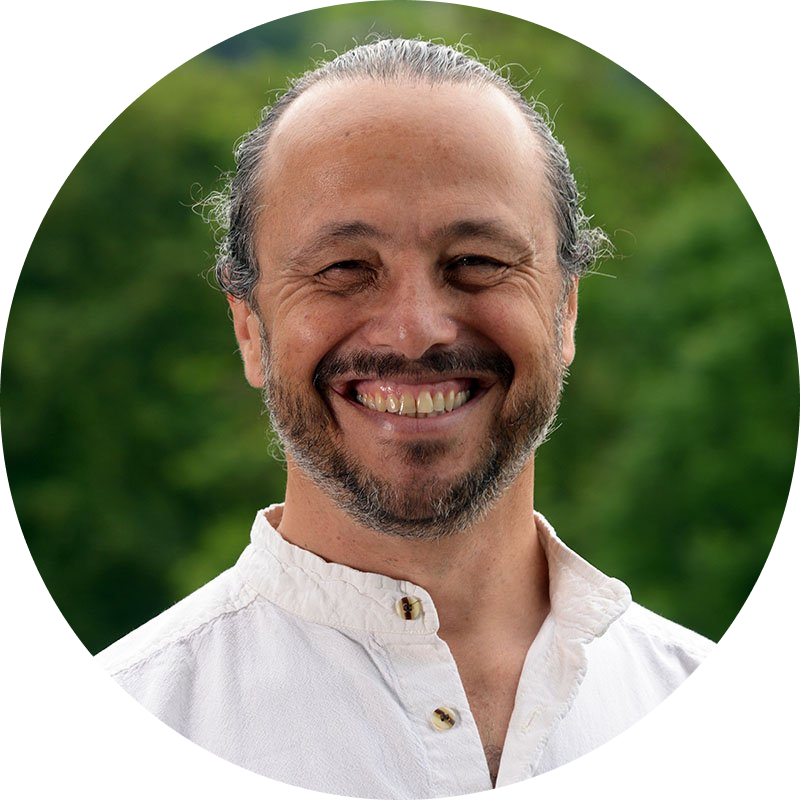 Dr. Ale Chaoul is the director of Tibetan Yoga Wellbeing, dedicated to educating individuals and communities about the ancient practice of Tibetan yoga and its transformative power to enhance physical, emotional, and spiritual well-being. He also serves as the scholar and founding
Dr. Ale Chaoul is the director of Tibetan Yoga Wellbeing, dedicated to educating individuals and communities about the ancient practice of Tibetan yoga and its transformative power to enhance physical, emotional, and spiritual well-being. He also serves as the scholar and founding
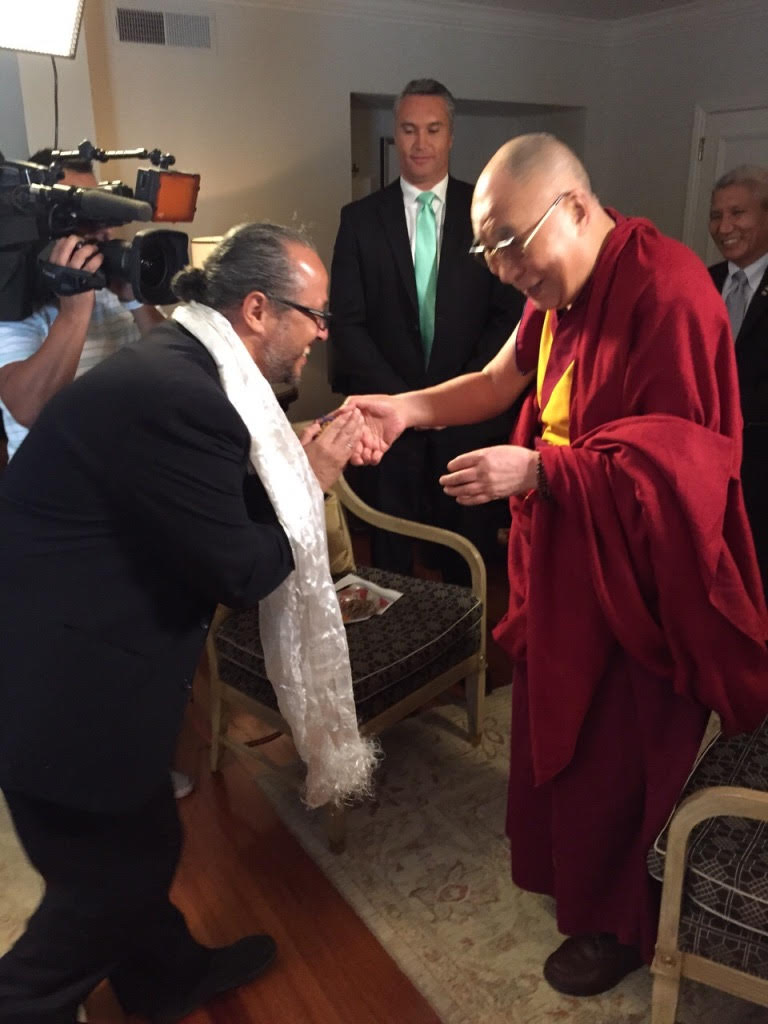 director of the Jung Center’s Mind Body Spirit Institute (MBSI). Dr. Chaoul holds a doctoral degree in religious studies from Rice University,where his dissertation focused on the application of Tibetan yogic practices in contemporary medical settings.
For the last thirty years Ale has studied with many Tibetan teachers in India, Nepal, and the United States, including H.E. Yongdzin Tenzin Namdak and Tenzin Wangyal Rinpoche, and is an adjunct faculty member at the Integrative Medicine Program at MD Anderson Cancer Center and at The University of Texas McGovern Center for Humanities and Ethics.
director of the Jung Center’s Mind Body Spirit Institute (MBSI). Dr. Chaoul holds a doctoral degree in religious studies from Rice University,where his dissertation focused on the application of Tibetan yogic practices in contemporary medical settings.
For the last thirty years Ale has studied with many Tibetan teachers in India, Nepal, and the United States, including H.E. Yongdzin Tenzin Namdak and Tenzin Wangyal Rinpoche, and is an adjunct faculty member at the Integrative Medicine Program at MD Anderson Cancer Center and at The University of Texas McGovern Center for Humanities and Ethics.
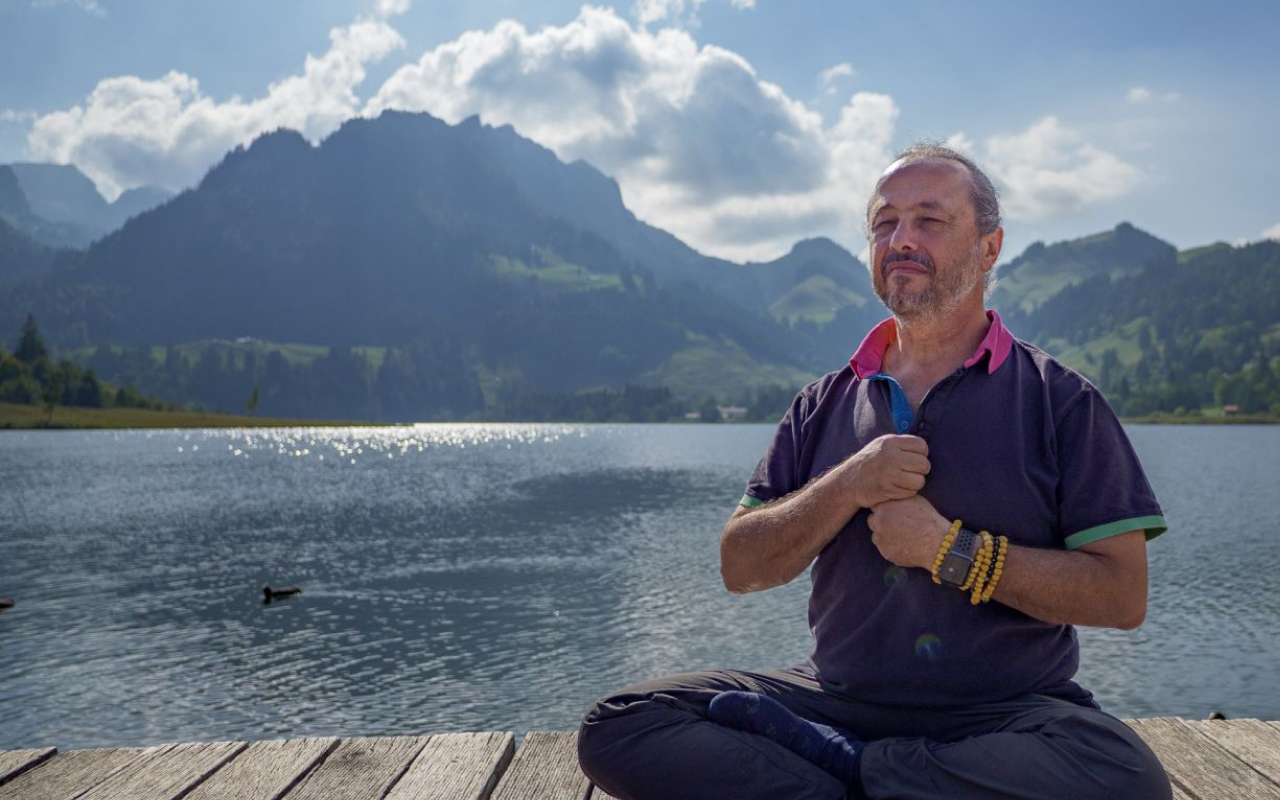 Since 1995, he has taught Tibetan meditation and yogic practices under the auspices of Ligmincha International across the United States, Latin America, and Europe. He is the author of Chod Practice in the Bon Tradition (Snow Lion, 2009),
Since 1995, he has taught Tibetan meditation and yogic practices under the auspices of Ligmincha International across the United States, Latin America, and Europe. He is the author of Chod Practice in the Bon Tradition (Snow Lion, 2009),
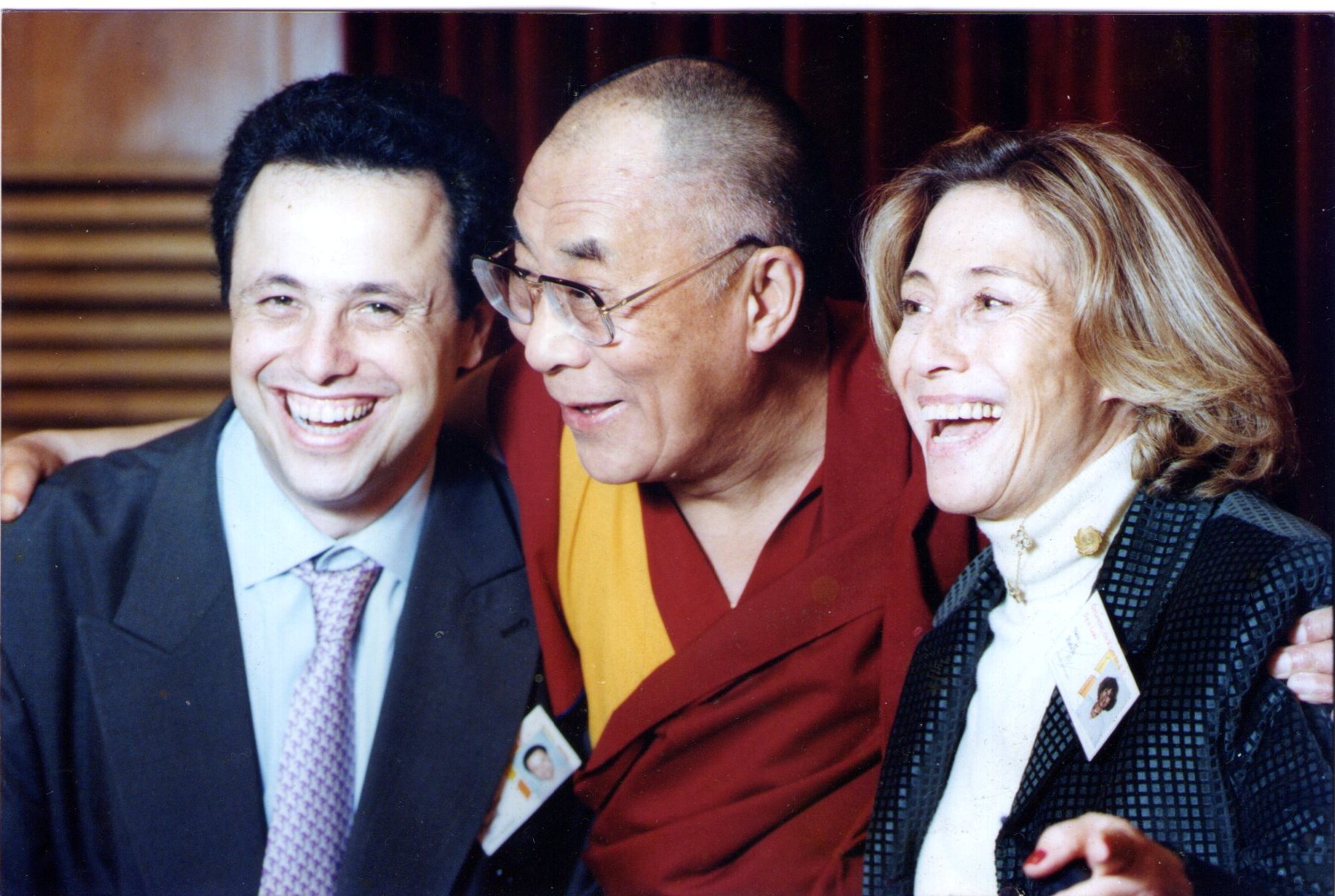 Tibetan Yoga for Health and Wellbeing (Hay House, 2018), and Tibetan Yoga: Magical Movements of Body, Breath and Mind (Wisdom Publications, 2021). Dr. Chaoul has also been recognized as a Fellow at the Mind & Life Institute.
Tibetan Yoga for Health and Wellbeing (Hay House, 2018), and Tibetan Yoga: Magical Movements of Body, Breath and Mind (Wisdom Publications, 2021). Dr. Chaoul has also been recognized as a Fellow at the Mind & Life Institute.
Photo of Ale at lake: Volker Graf
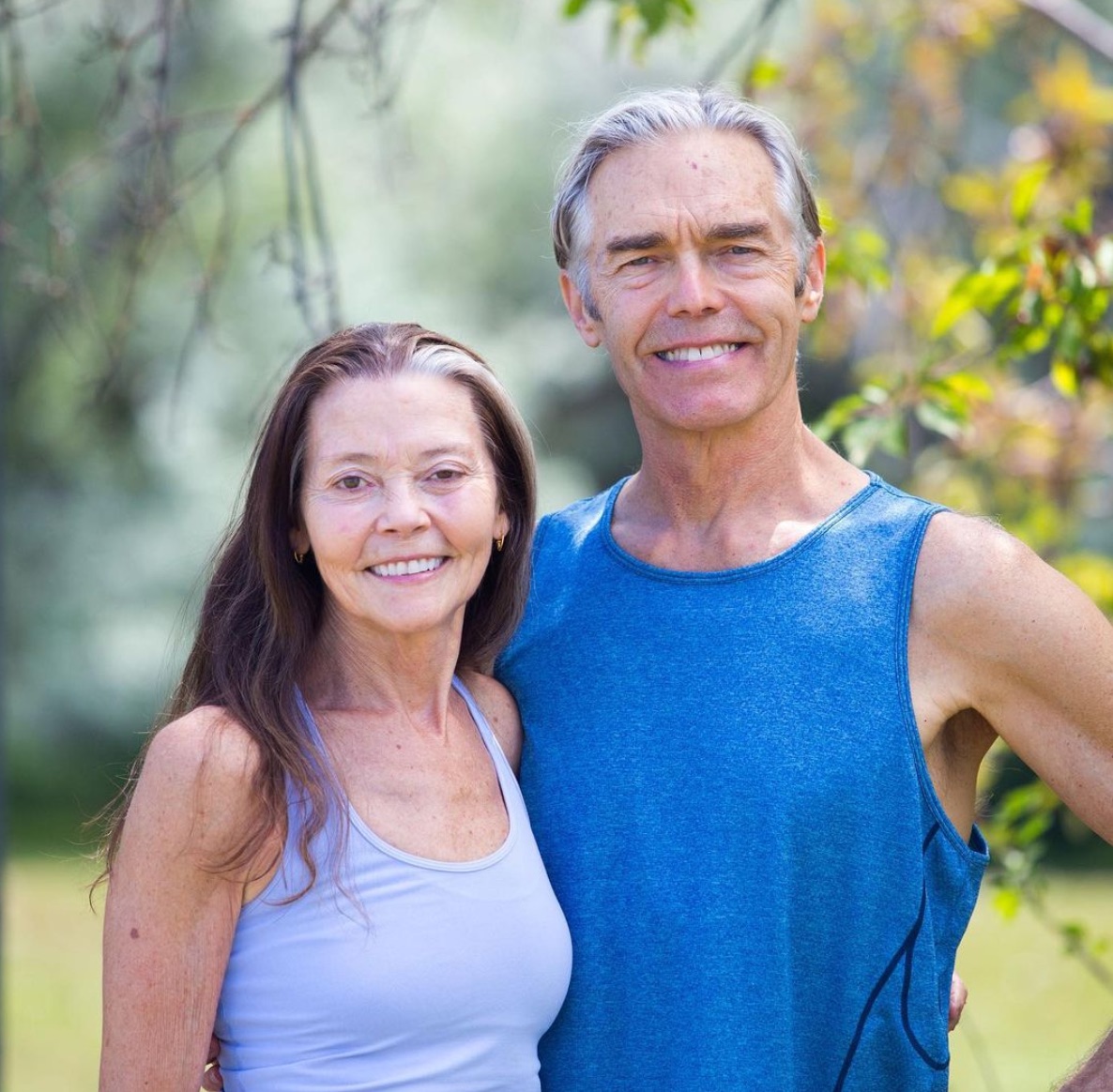 Richard Freeman has been a student of yoga since 1968. He spent nine years in Asia studying yoga āsana, prāṇāyāma, Sufism, Sanskrit language, and Indian philosophy. He has studied asana with B.K.S. Iyengar and K. Pattabhi Jois and has worked with numerous Buddhist teachers to draw insights into the interfacing of Buddhism and yoga as a reflection of life. Richard’s metaphorical, humorous, teaching style appeals to students of many backgrounds and nationalities.
Mary Taylor began studying yoga in 1971 and her studies have grown into a deep interest into how yoga asana, meditation and the interfacing of yoga with Buddhism combine to support us through complex modern times. Her main asana practice is in the internal forms of the ashtanga vinyasa tradition. She is part of the core faculty of the Being with Dying program at Upaya Zen Center and the senior faculty for the UZIT training program, both of which apply contemplative practices to improved and sustainable wellness within medical settings.
Richard Freeman has been a student of yoga since 1968. He spent nine years in Asia studying yoga āsana, prāṇāyāma, Sufism, Sanskrit language, and Indian philosophy. He has studied asana with B.K.S. Iyengar and K. Pattabhi Jois and has worked with numerous Buddhist teachers to draw insights into the interfacing of Buddhism and yoga as a reflection of life. Richard’s metaphorical, humorous, teaching style appeals to students of many backgrounds and nationalities.
Mary Taylor began studying yoga in 1971 and her studies have grown into a deep interest into how yoga asana, meditation and the interfacing of yoga with Buddhism combine to support us through complex modern times. Her main asana practice is in the internal forms of the ashtanga vinyasa tradition. She is part of the core faculty of the Being with Dying program at Upaya Zen Center and the senior faculty for the UZIT training program, both of which apply contemplative practices to improved and sustainable wellness within medical settings.